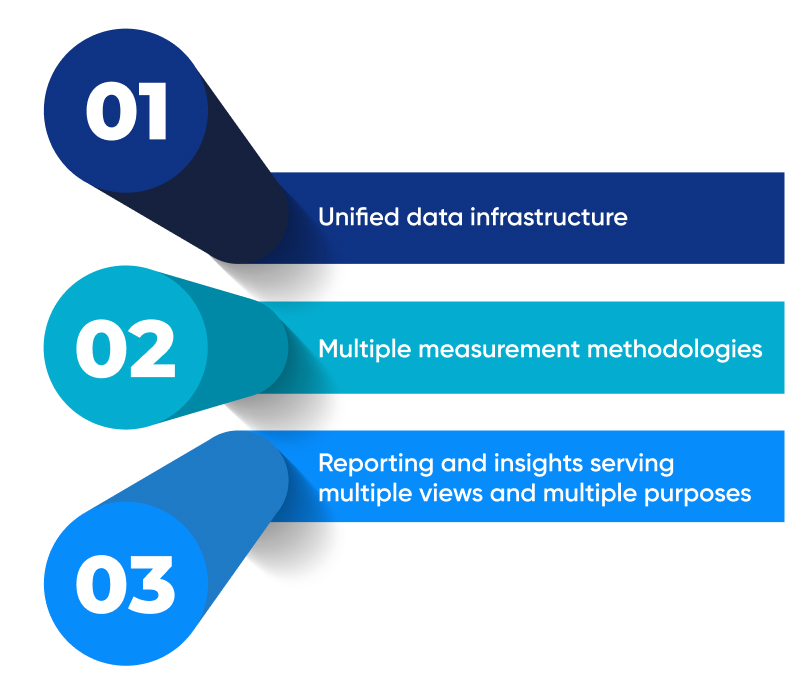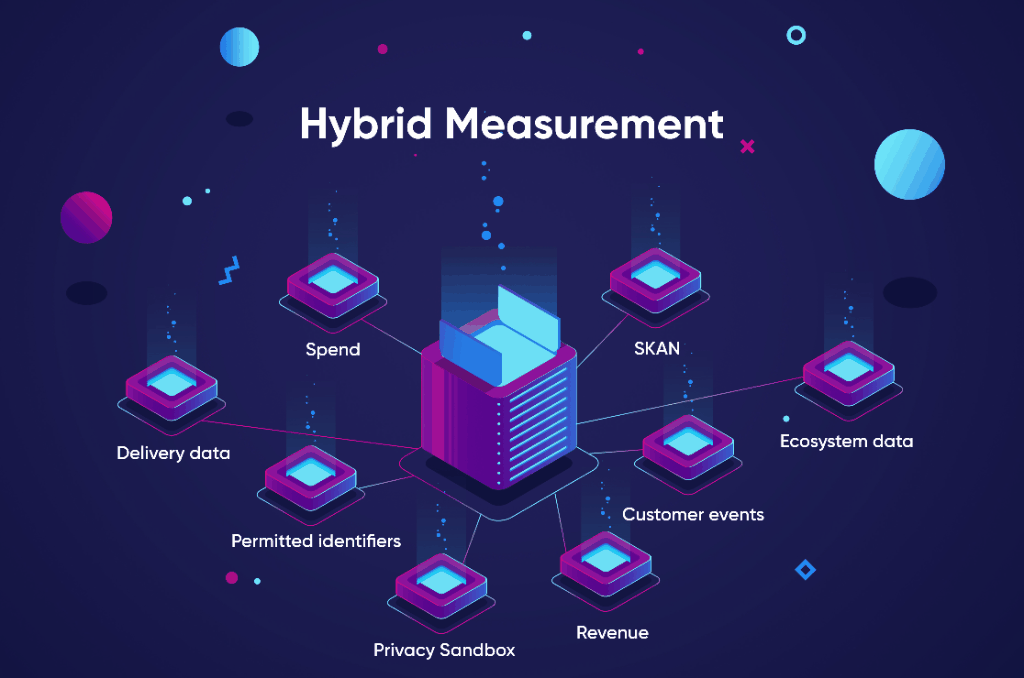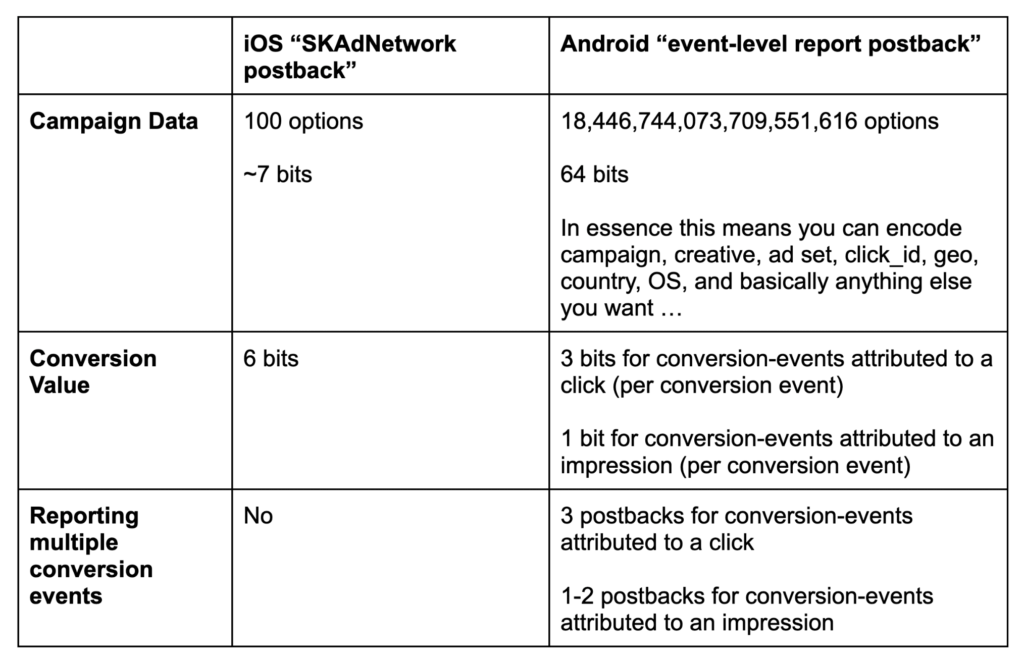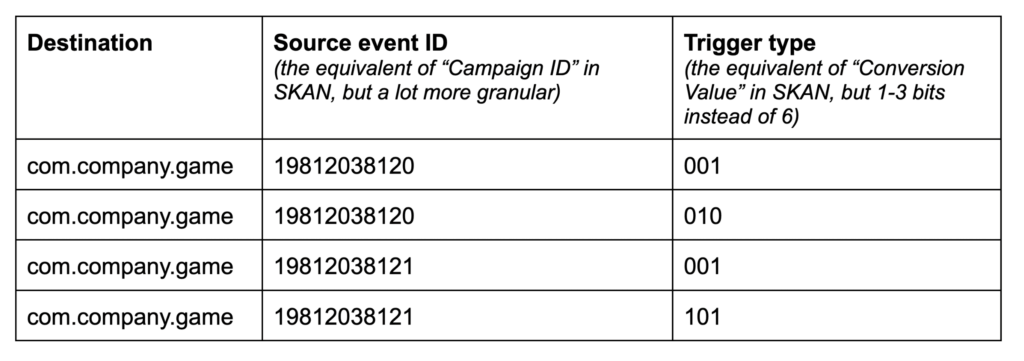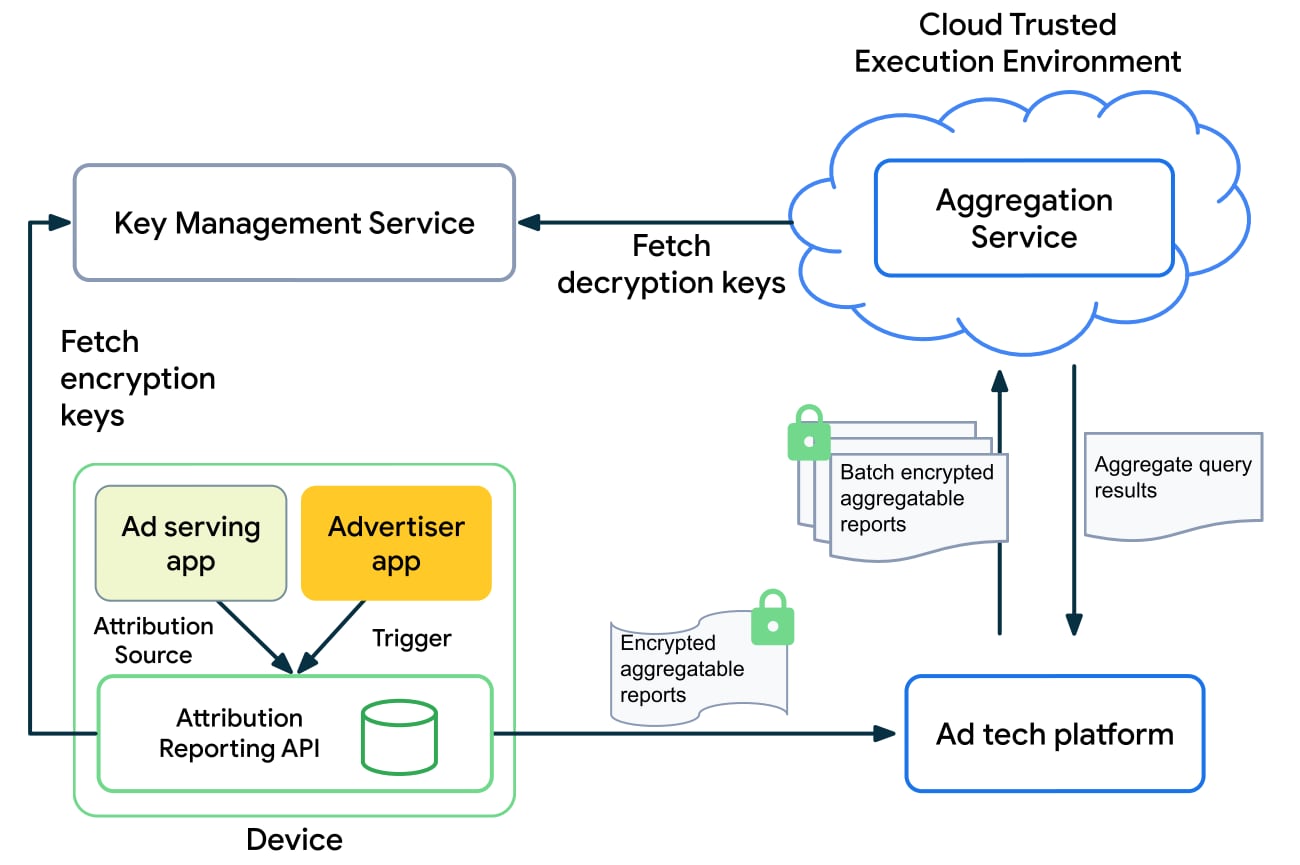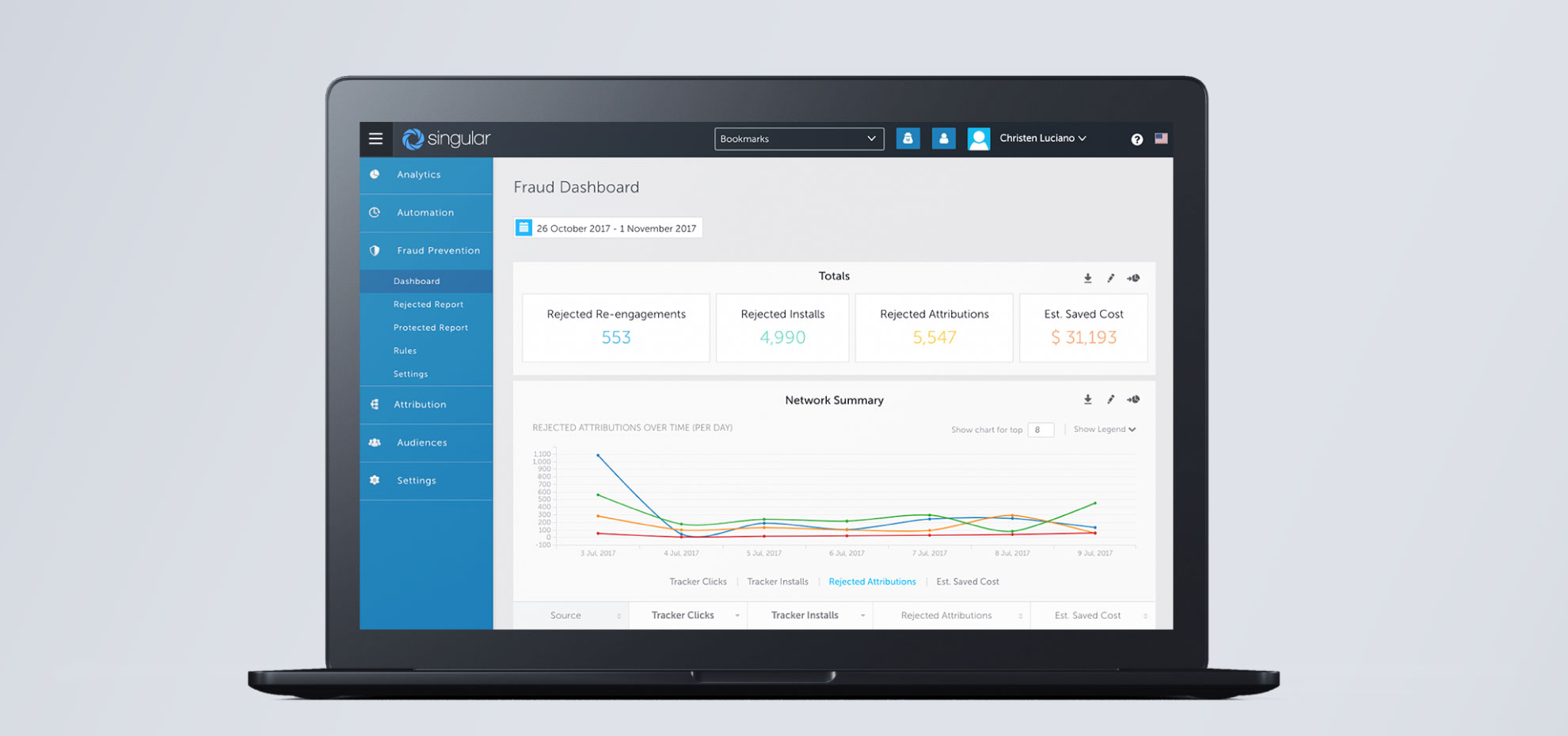We’re extremely excited to announce our new proprietary measurement methodology: Unified Measurement. Available today, this method is superior to every other approach available from any MMP and provides a serious competitive advantage to Singular customers.
The new Unified iOS Report, utilizing our Unified Measurement technology, is already live to all Singular customers and provides unified and accurate reporting for all iOS mobile marketers’ paid, organic, and owned media app installs.
Singular customers have reported massive improvements in major metrics:
- 43% boost in campaign ROI
- 31% more attributed conversions due to better organic vs paid identification
- 19% reduction in double-counted installs and revenue
- 35 day post-install cohort analysis
The upshot of this massive upgrade in measurement capability is a unified reporting view for all channels. Unified Measurement eliminates duplication between SKAN & MMP measurement, which can affect 12-20% of your installs, drastically increasing CAC.
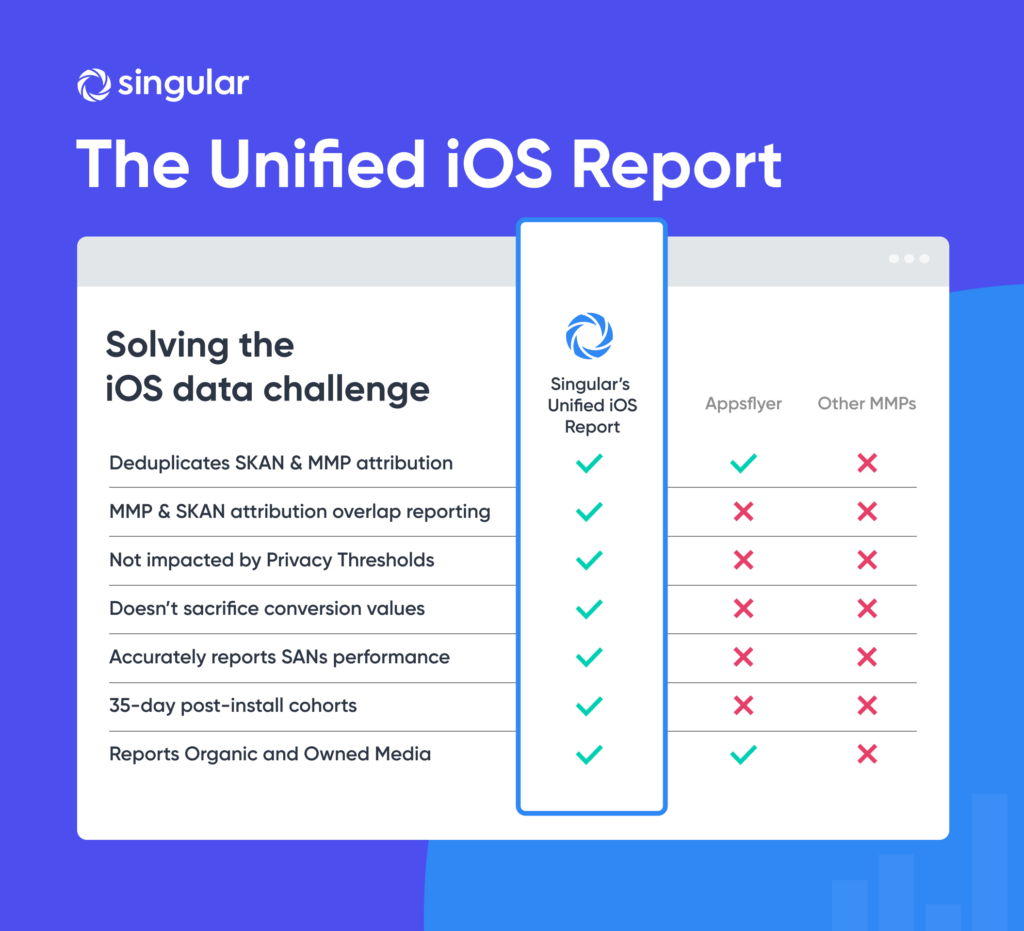
Unified Measurement also enables accurate identification of true organic installs, much longer post-install cohort analysis, significantly improved visibility of individual channel/partner performance, true ROAS thanks to fewer missed conversions, and lower CPIs that reflect the actual value generated by paid marketing campaigns.
Even better: all of this is achieved without wasting precious conversion value bits in your SKAN postbacks.
But don’t just take our word for it …
“UA has become more challenging over time. It’s important to have the right attribution partner for success. Singular’s latest Unified iOS Report is one of the best solutions so far for iOS attribution!”
Avinash Somashekhar, Marketing Director (UA & Growth) @ Playsome
“We are using the Unified iOS Report to gain a deeper understanding of our iOS users and the attribution for iOS campaigns. We have been comparing the data we’ve had so far with the new unified insights we’re getting, and are also evaluating the ways to adjust our internal prediction models according to the additional data that is available within the new reports.”
Nevena Ristić, Product Marketing Manager @ Webelinx
SKAdNetwork’s impact on mobile marketing measurement
The loss of the IDFA as a generally available tool for user acquisition campaign measurement had a major impact on measurement reliability. Coupled with SKAdNetwork’s privacy thresholds and crowd anonymity, iOS measurement reliability and accuracy have suffered significantly.
Impacts include:
- Measurement fragmentation from multiple data sources:
- SKAN
- MMP tracking
- Apple Search Ads
- IDFA (when available)
- Inaccurate measurement of individual channel and partner performance
- Inflated organics
- Duplicated counting of installs across different sources/measurement methods
- Severely limited view of post-install conversions (1-2 days)
- Incomplete data due to privacy thresholds (understating results)
The result of those challenges is obvious:
- Ridiculously high reported CPIs for some paid campaigns
- Deceivingly low CPIs for others
- Artificially high CAC
- Huge channel performance confusion: who did what? which numbers can I trust?
- Massive measurement issues: SKAN and non-SKAN numbers don’t sum up to real-world totals
All of this leads to marketers being unable to really trust channel performance, optimize campaigns effectively, allocate budget efficiently, and — crucially — demonstrate to CEOs and CFOs that their paid user acquisition campaigns are, in fact, ROI-positive.
Singular’s Unified Measurement framework solves these problems.
Unified Measurement results: what we’re seeing from customers
iOS user acquisition managers know the SKAN struggle: are my numbers accurate? Why are my CPIs so high? Is this partner really delivering everything that I’m seeing? Should I apply some “multiplier” to compensate for my inability to dedupe?
Here’s what we’re seeing from customers.
- 43% boost in D14 ROI
Better attribution accuracy and organic identification led to better measurement of campaign ROI. The same customer saw a massive boost in day 14 ROI with the Unified iOS Report: One partner increased from 7% to 10%, and one exploded from .3% to 15%. - 31% reallocation from organic to paid
One beta tester’s dashboard was reporting over 1.3 million organic installs. Unified iOS Reporting revealed the truth: only 938k of these were actually organic, while the rest were attributed to their marketing campaigns. - 19% reduction in double-counted revenue
A customer found that 19% of their revenue was claimed by multiple sources. Unified Measurement deduped it to get accurate performance insights. - 57% reduction in eCPI
One customer couldn’t explain absurdly high eCPIs in a campaign, but the Unified iOS Report showed that both SKAN CPI and MMP eCPI were off, and their real cost of acquisition was significantly lower. - 88% higher revenue attributed to SKAN campaigns
One customer had 7-day SKAN revenue for a campaign at just $1,187. Unified iOS Reporting showed the real revenue to be $2,228, and deduped 19% of the revenue that was being double counted across sources.
Note: each statistic is from a campaign managed by actual customers using Unified Measurement. Results will naturally vary by situation, partners, and campaigns.
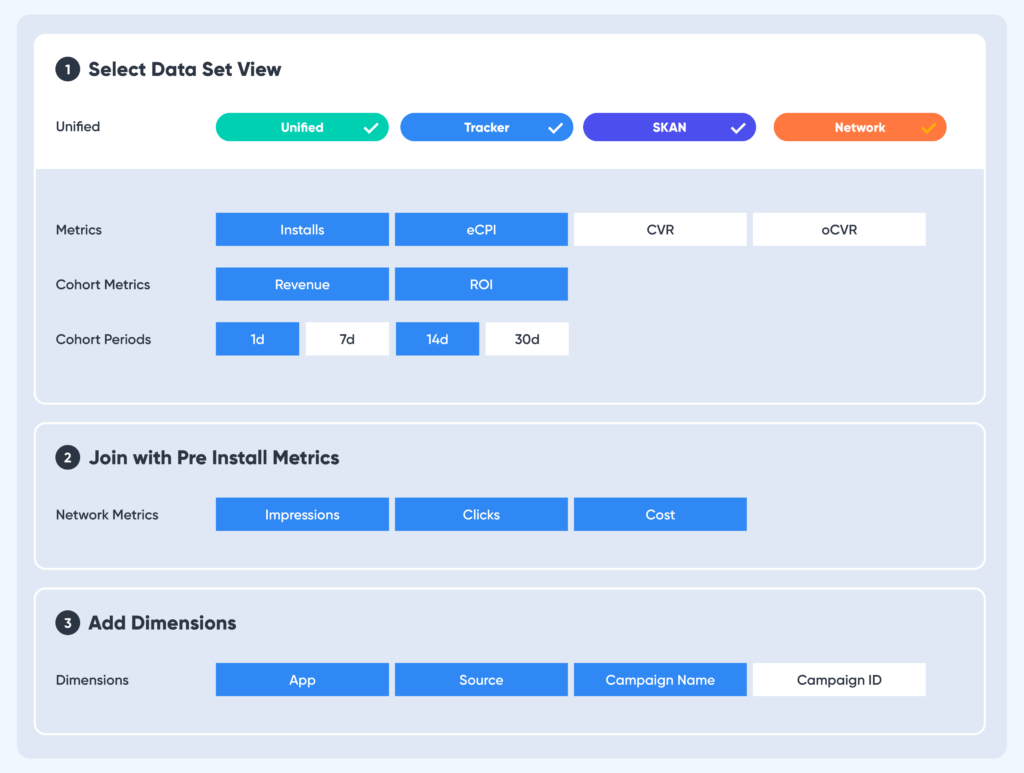
All of the iOS data challenges we’ve talked about have consequences. Bad data leads to bad decisions, and bad decisions reduce marketing effectiveness, stifling growth. More accurate data enables smarter decisions, allowing marketers to adjust bids and budgets much more effectively to optimize growth.
The bottom line:
iOS Unified Reporting provides the most accurate marketing measurement and reporting available in the privacy era. It is already helping app publishers save tens of thousands of dollars monthly in spend while boosting growth.
The new Unified iOS Report: built on privacy-safe Unified Measurement
The severe limitations of SKAdNetwork and the measurement fragmentation associated with it are problems all mobile measurement platforms (MMPs) have to solve.
To this point, other MMPs have posted partial solutions — or none at all. AppsFlyer chose to implement this deduping mechanism with a solution they call SSOT. While a simple approach, it might be too simplistic since it comes with significant drawbacks:
- Wastes 50% of your SKAN conversion values
- Prioritizes probabilistic analytics over deterministic SKAN attribution
- Reduces accuracy (up to 20% of the data is subject to privacy thresholds because SSOT depends on SKAN conversion value reporting)
The result: SSOT generally undercuts your best media sources, overcounts organic installs (inflating CAC), undercounts marketing teams’ true impact in terms of real conversions, and inhibits your ability to manage SKAN conversion values in a sophisticated manner.
These drawbacks are not only recognized by us but have been previously discussed by partners and other measurement platforms as well. In the absence of a better solution, SSOT surely provides some value, but we were on the hunt for a better solution.
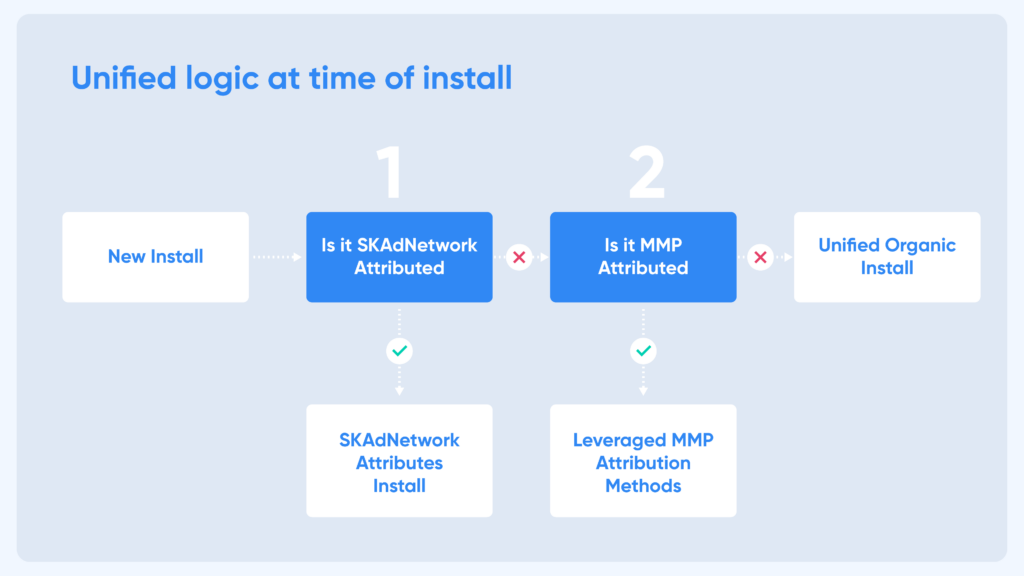
Singular’s research team spent the past year developing and successfully testing a much stronger technological solution. Our product automatically cross-references SKAN data, network data, and MMP data to analyze overlaps, detect similarities, and attribute campaigns more accurately. This new method doesn’t rely on sacrificing SKAN conversion model bits and therefore doesn’t have the same weaknesses as SKAN conversion value methods do.
Utilizing that solution, we then supercharged our SKAN Advanced Analytics product, which squeezes the most possible data out of SKAN reporting by intelligently applying accurate first-party in-app event data versus cohorts of users who share the same SKAN conversion values. This minimizes the impact of lost privacy threshold data, and provides true extended post-install cohort analysis for SKAN campaigns (up to 35 days).
Unified Measurement aligns perfectly with our vision. Privacy is not going away, and each platform will have its own challenges. As a company we are passionate about enabling marketers to succeed through the development of groundbreaking technologies that help solve measurement and data gaps while maximizing user privacy.
While iOS is the focus of today’s release, we are already actively working on other platforms (Android, web) that will be going through major privacy disruptions with the sunsetting of their primary identifiers, and making sure we apply the same unified vision to all platforms.
In our testing and client experience, Singular’s Unified iOS Report is the only method available today that can accurately separate paid, owned, and organic installs, and does it without sacrifices or tradeoffs.
The new Unified iOS Report delivers accuracy, organics, long cohorts, and full transparency
Singular’s Unified iOS Report delivers one complete view of attribution reporting for all your iOS channels: SANs, Apple Search Ads, ad networks, influencers, organic, owned, and earned. But it doesn’t just offer up a single number that you have to trust blindly.
What you get with the Unified iOS Report is a fully transparent side-by-side comparison of all measurement and data types (SKAN, MMP, and even network-reported conversions).
It also provides accurate organics, which is critical to getting accurate data on the true cost of installs and real ROAS per channel and campaign. (No more inflated payback periods thanks to unattributed organics!) The Unified iOS Report, powered by Singular’s Unified Measurement methodology, provides a significantly more accurate picture of partner performance than other MMPs, which unlocks much more optimization potential due to knowing the true value of your campaigns.
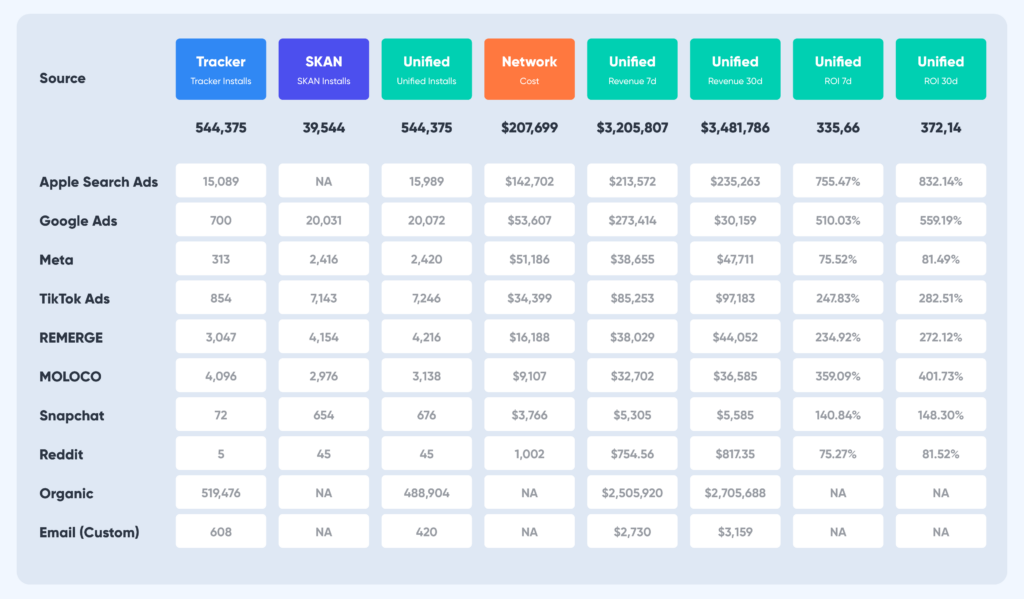
Thanks to the incredible power of this new attribution technology, Singular now offers long cohorts for all your iOS campaigns: up to 35 days. All your cohorts, from all your sources, all in one place. Plus, the Unified iOS Report dramatically improves the already impressive accuracy of SKAN Advanced Analytics for modeled revenue … while not requiring you to use a conversion value model that might not align with your business.
In other words, you’re reporting marketing performance almost like pre-ATT days. But you’re doing it in a privacy-safe way.
Unified iOS Reporting: available today
Unified iOS Reporting is available in the Singular dashboard today for all customers and will be available via Singular ETL shortly.
Not yet a customer?
Consider upgrading your measurement and reporting capabilities!
